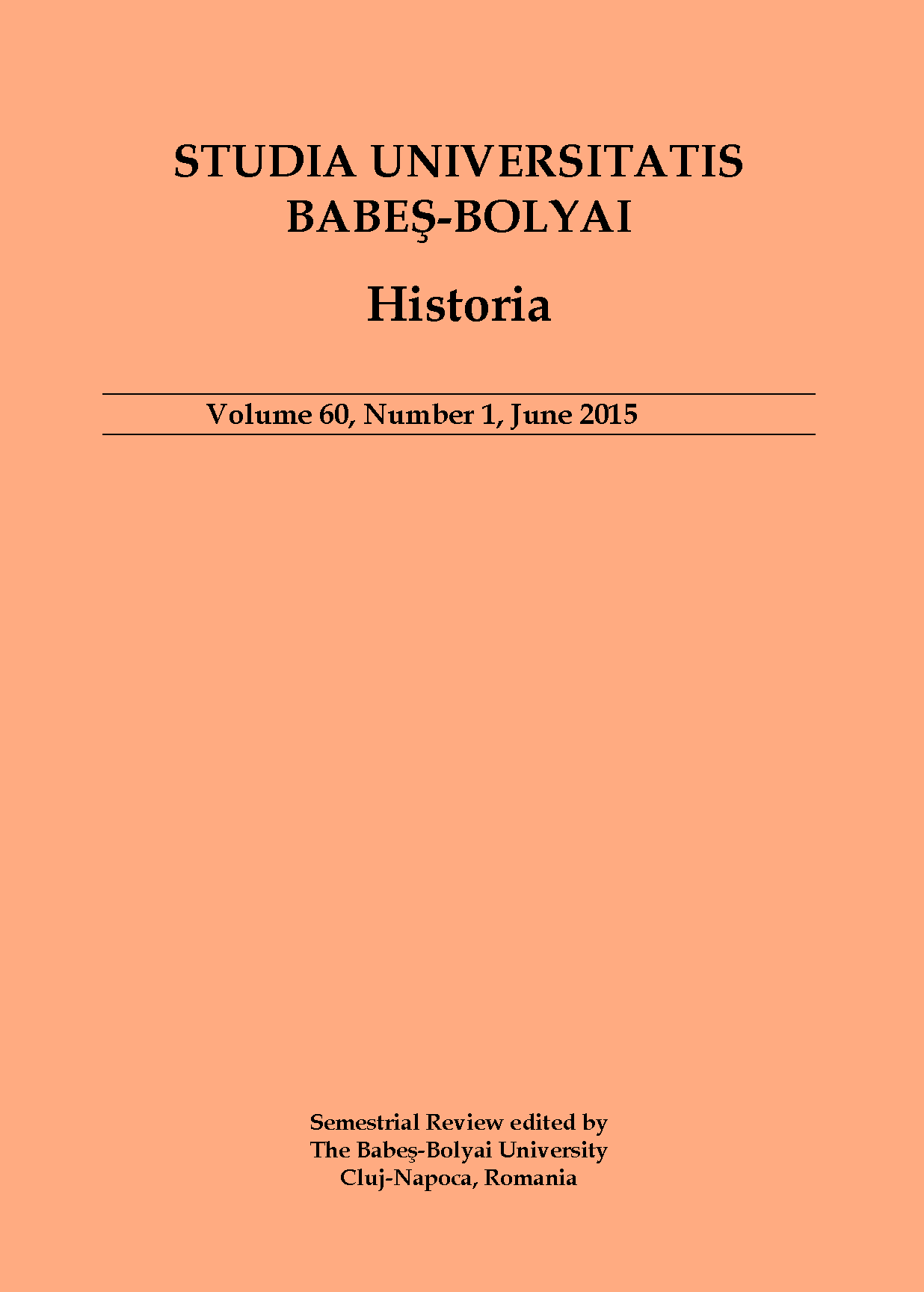„Those Last Days...” Reflections upon an Apocalyptical Text from 18th Century Transylvania
Keywords:
Apocrypha, manuscript miscellany, Antichrist, Vision of Daniel, moralistic discourse.Abstract
There is large evidence concerning a dynamic circulation of apocryphal literature in eighteenth-century Transylvania. These texts are characterised above all by a variety of types of writings and of themes. The End is recurrently approached in its immediate meaning of death as well as from an eschatological point of view. The latter is also the major theme of an unpublished text, part of a miscellany, copied most likely in north-western Transylvania in 1761 and entitled: Istoriia pentru naşterea lui Antihrist şi pentru perirea lui şi pentru judeţul lui Hristos. Therefore, this study intends an analysis of its content, integrated within the wider discussion about apocalyptical literature through an evaluation of the whole manuscript. Its investigation is justified by the fact that sources of this kind can unveil specific expectations to which all copyists’ efforts are put forth, while marginalia might offer information about their reception as a cultural product. Nonetheless the image of Antichrist and the story of its future coming are topics insufficiently researched by Romanian scholars concerning Apocrypha. Which are the narrative sequences of this text? What other writings, canonical or not, are similar in their contents? What particular elements can be identified? Which are the other texts this manuscript miscellany consists of and how do they assemble to create a unitary discourse? All these are questions that lead to preliminary observations regarding this unpublished source and to which I will try to answer in the present paper.
Rezumat: Acele ultime zile... Reflecţii pe marginea unui text apocaliptic din Transilvania secolului al XVIII-lea. În Transilvania secolului al XVIII-lea literatura apocrifă se bucură de o circulaţie dinamică, iar textele vehiculate se caracterizează prin varietate: una a scrierilor în sine, alta a temelor pe care ele glisează. Sfârşitul, atât în înţelesul său imediat, ca moarte, cât şi ca sfârşit al lumii, revine mereu. Acesta devine o temă majoră a unui text inedit provenind dintr-un miscelaneu, copiat la 1761 – cel mai probabil în zona nord-vestică a Transilvaniei –, intitulat: Istoriia pentru naşterea lui Antihrist şi pentru perirea lui şi pentru judeţul lui Hristos. Drept urmare studiul de faţă propune o analiză asupra conţinutului său, iar, prin raportare la manuscrisul din care face parte, o integrare în discuţia mai largă asupra literaturii apocaliptice. Studierea lui se justifică din perspectiva faptului că fiecare astfel de manuscris vorbeşte despre un orizont specific de aşteptare pe care copiştii urmăresc să-l satisfacă, în timp ce însemnările marginale pot oferi informaţii despre receptarea lui, aşadar despre intenţionalitatea unui produs cultural şi despre impactul acestuia. De asemenea, imaginea lui Antihrist şi povestea legată de venirea sa au fost destul de puţin aprofundate în cercetările româneşti asupra apocrifelor. Care sunt secvenţele textului? Ce alte scrieri, canonice sau nu, cuprind pasaje similare? Ce elemente particulare pot fi identificate? Care sunt celelalte texte cuprinse în acelaşi miscelaneu şi cum se articulează ele într-un discurs unitar? Sunt întrebări ce conduc spre observaţii preliminare asupra acestei surse inedite şi care îşi găsesc răspunsuri în această lucrare.
Cuvinte cheie: apocrife, miscelaneu, Antihrist, Viziunea lui Daniel, discurs moralizator
Downloads
Published
How to Cite
Issue
Section
License
Copyright (c) 2015 Studia Universitatis Babeș-Bolyai Historia

This work is licensed under a Creative Commons Attribution-NonCommercial-NoDerivatives 4.0 International License.






